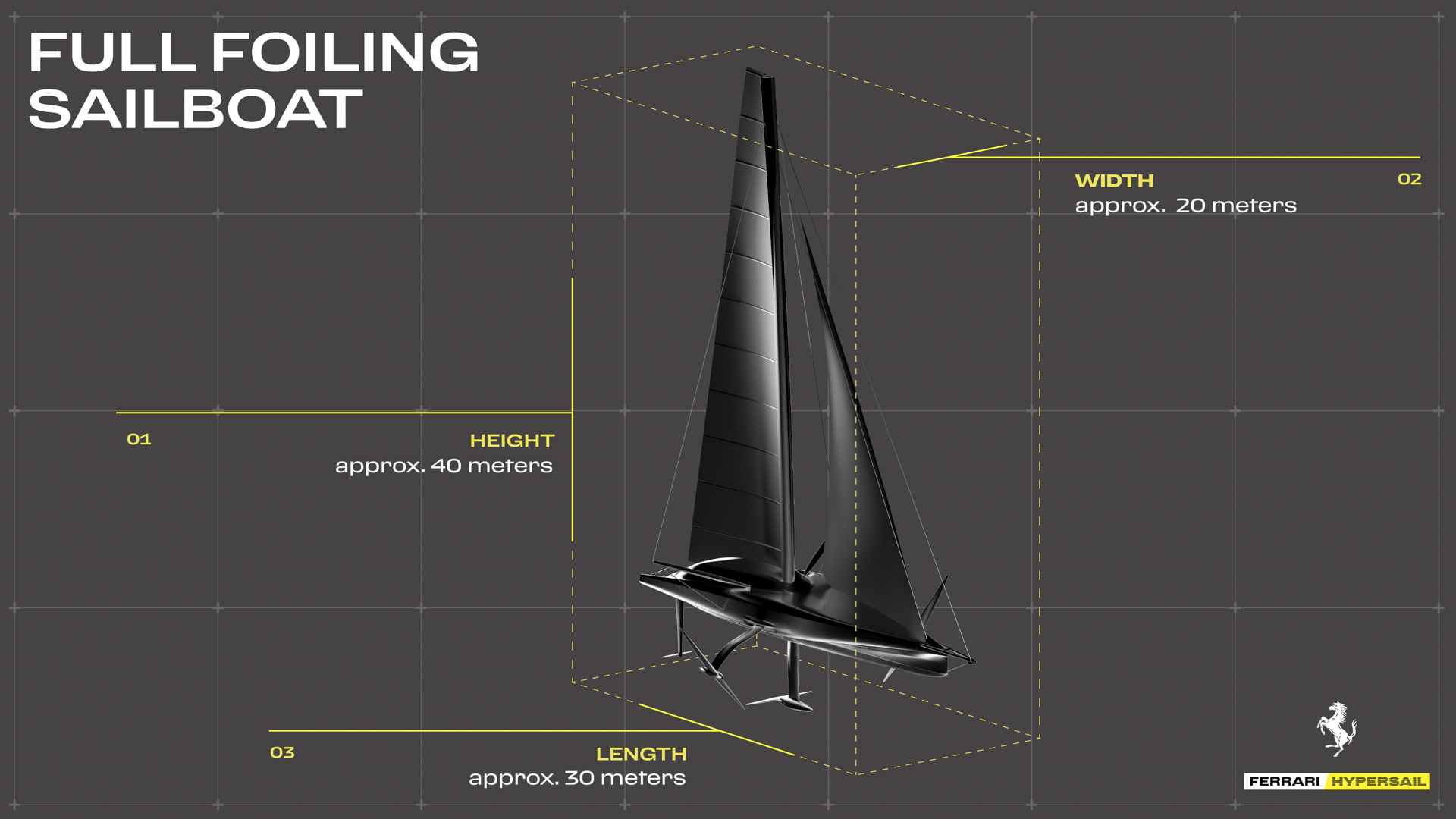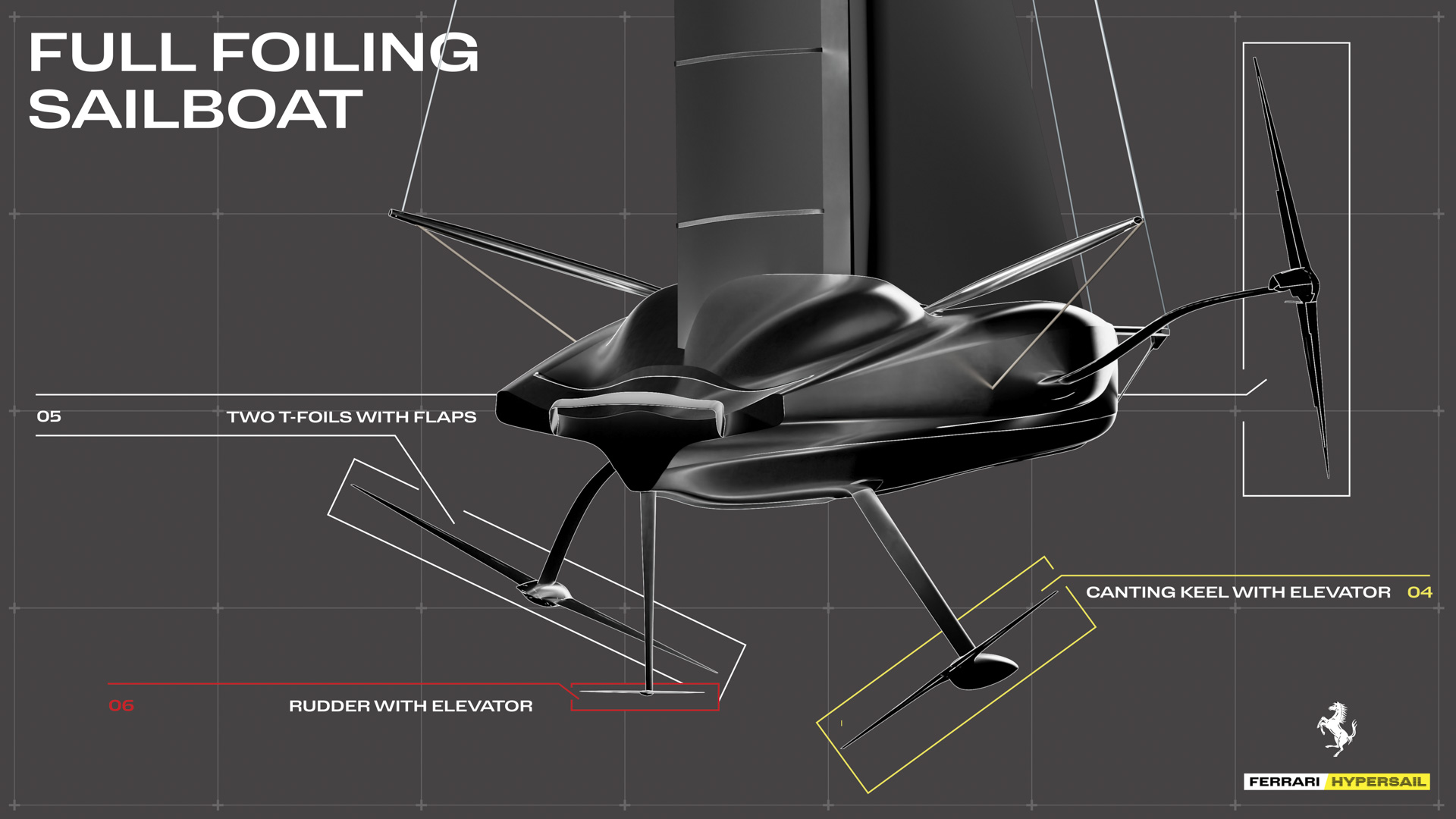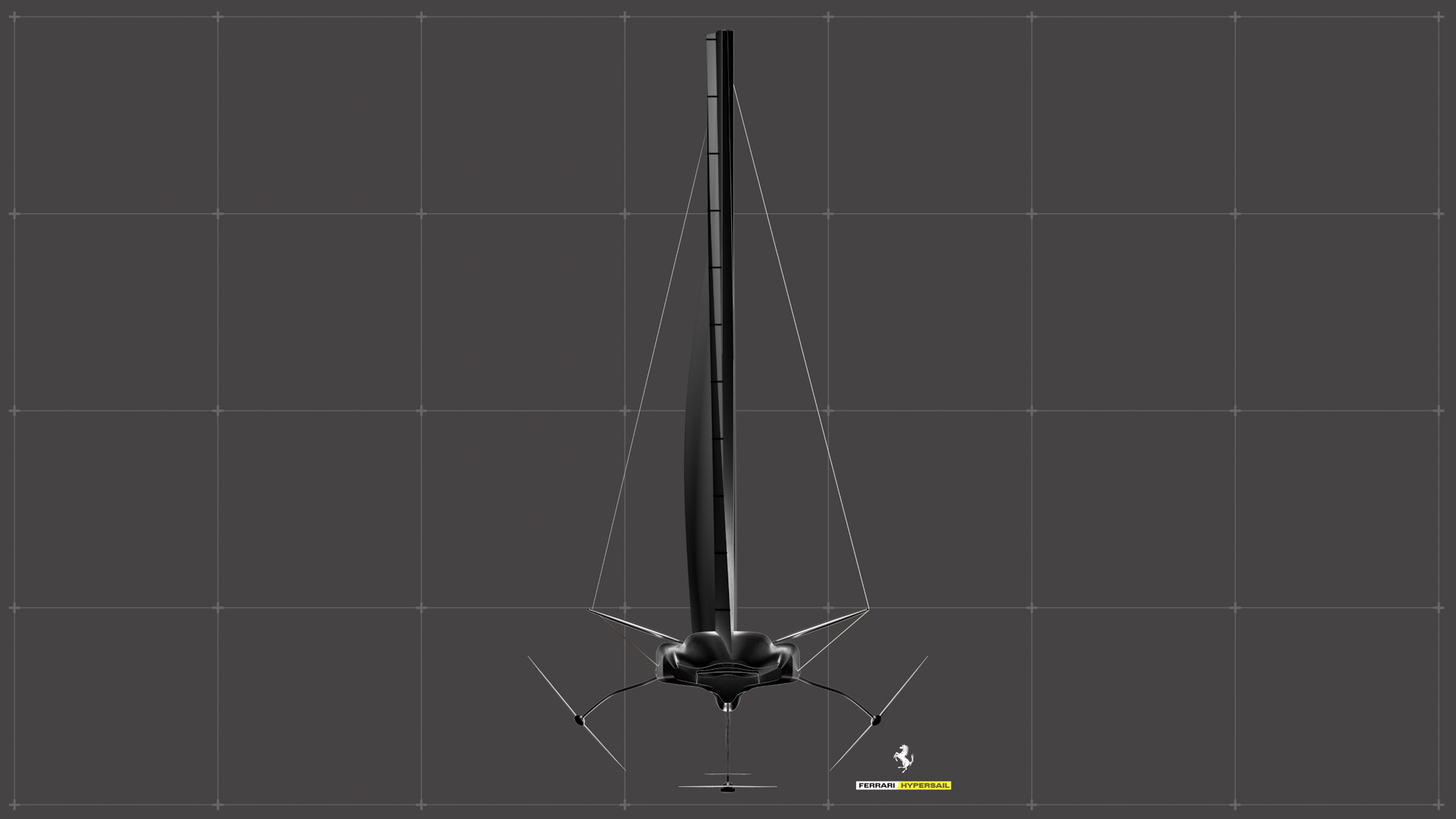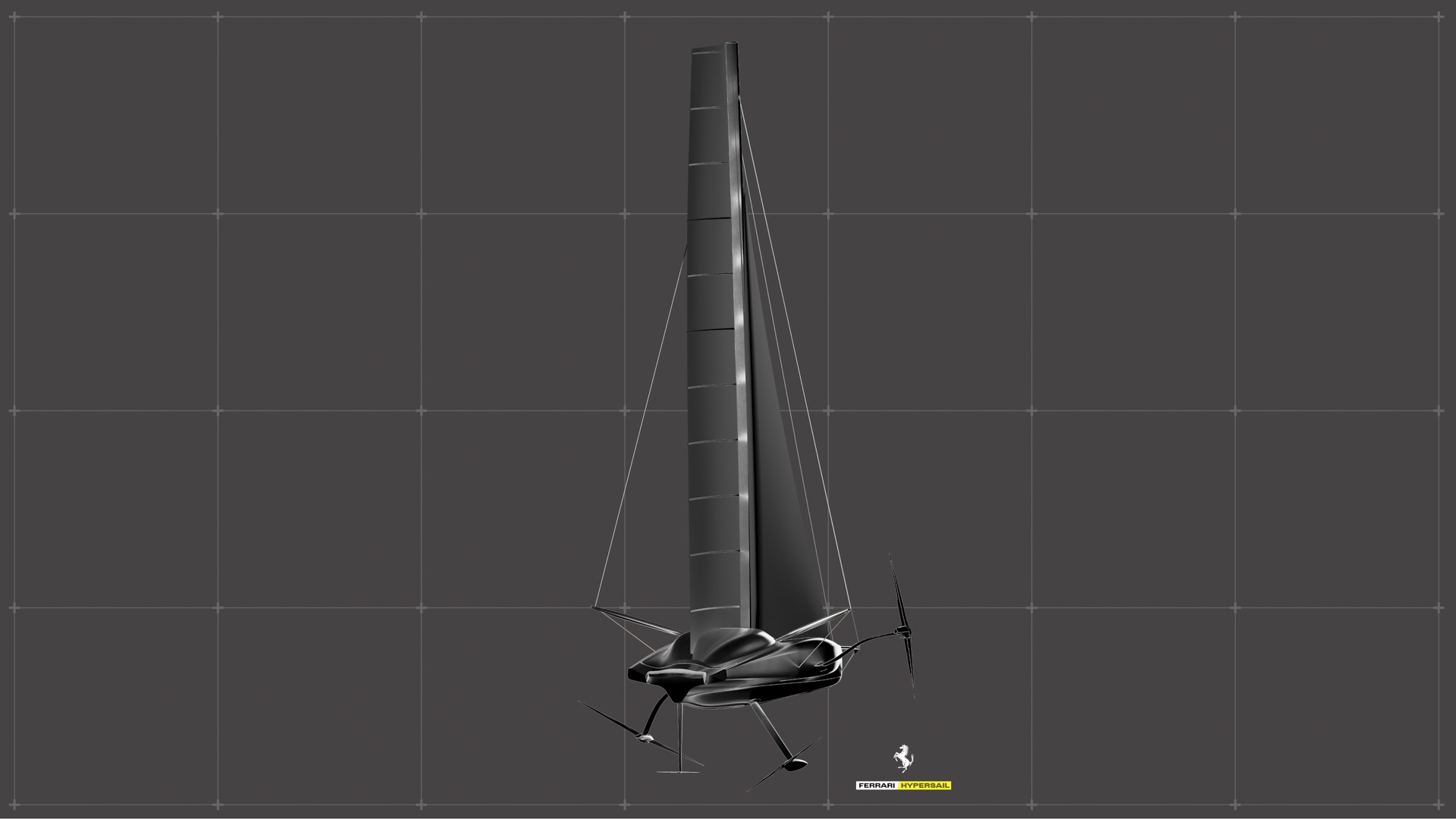
This week, Ferrari released plans to build an extremely expensive vehicle with no engine. Meet the Hypersail, a decidedly sinister-looking 100-foot sailing yacht. This won’t be the kind of yacht you throw a party on—it’s going to be built for speed.
As for why this is happening, an article on Ferrari’s site states that the idea is to “broaden Ferrari’s racing identity, by pushing the Prancing Horse into another form of endurance competition.” Ferrari Executive Chairman John Elkann is quoted answering “why” with, “Because we couldn’t not do it. When one looks at what drives Ferrari, it’s about passion and competence at the service of the impossible.” Sounds like it boils down to “because we wanted to,” which, sure, why not!
This slightly abstract reveal video gives you a little more context on what we’re talking about:
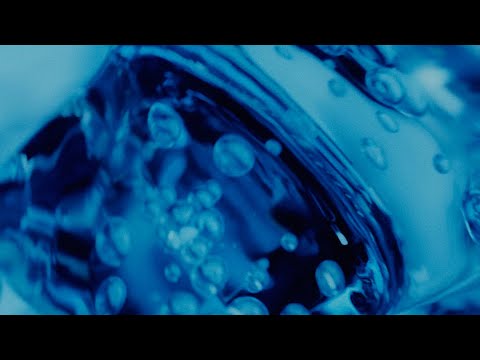
I’ll admit I don’t know quite enough about boat racing to quickly understand if this tri-foil setup is better than existing foil systems (there are plenty of racing yachts using such a thing), but the basic idea is maximal hydrodynamics and velocity. Speed is a little different on the water, not just because it’s measured in knots but also because what feels like a casual cruise in a car is absolutely ripping in a boat. America’s Cup racing yachts will be in the 60 mph neighborhood at maximum attack.
Ferrari has stated that its ultimate plan is to take this thing racing. “Soon, watching the Prancing Horse unfold on the mainsail of its first sailing yacht will get fans’ pulses racing as much as seeing a rossa cross the finish line of Le Mans first,” the brand posted.
There are some lines in the press release about sharing learnings from the car side, but I don’t know. I think somebody over there just wanted to try something different.
The Ferrari Hypersail program is being run by Team Principal Giovanni Soldini, who will pick the sailors as well as direct the vessel’s construction and planning. The yacht itself is being designed by French naval architect Guillaume Verdier.
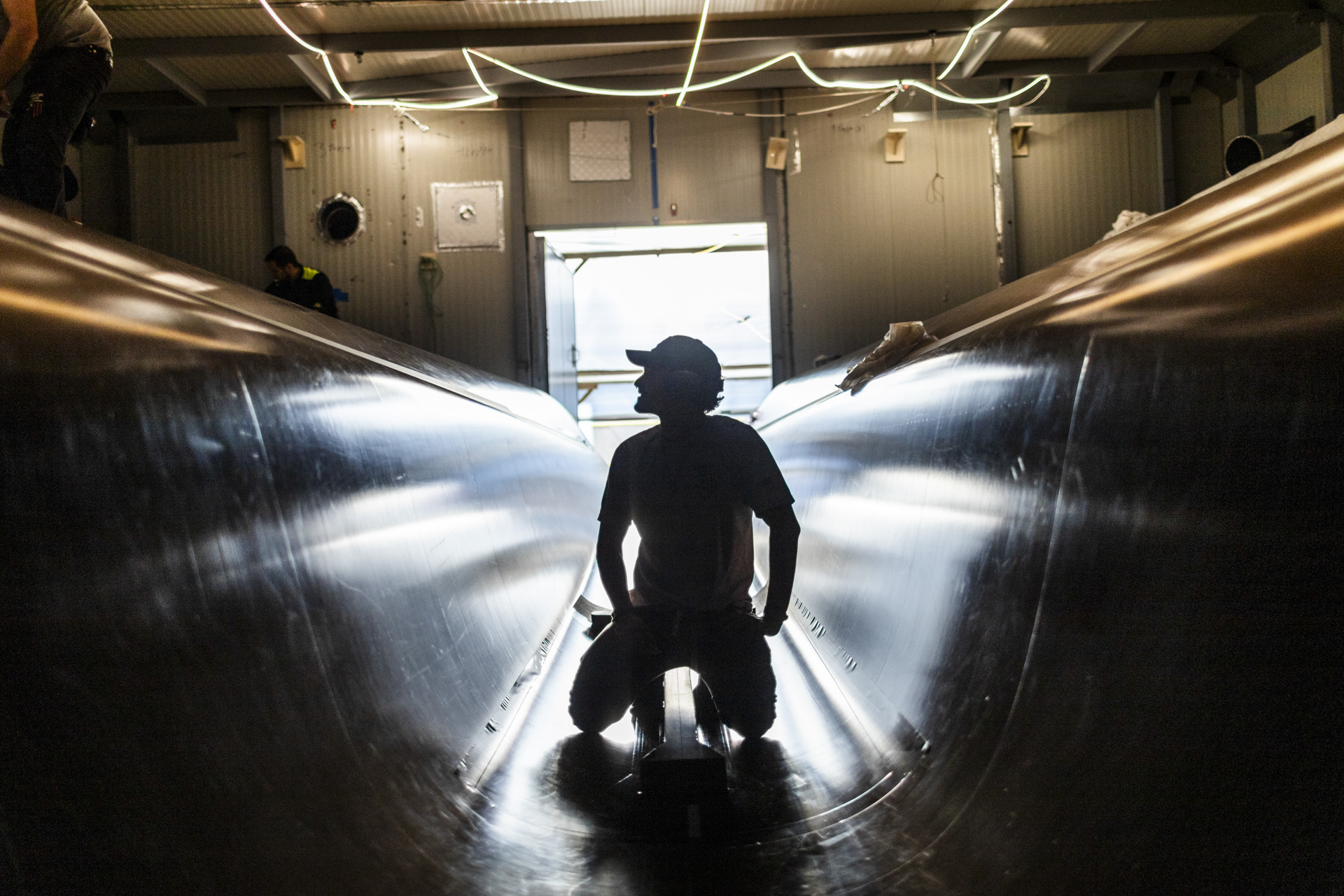
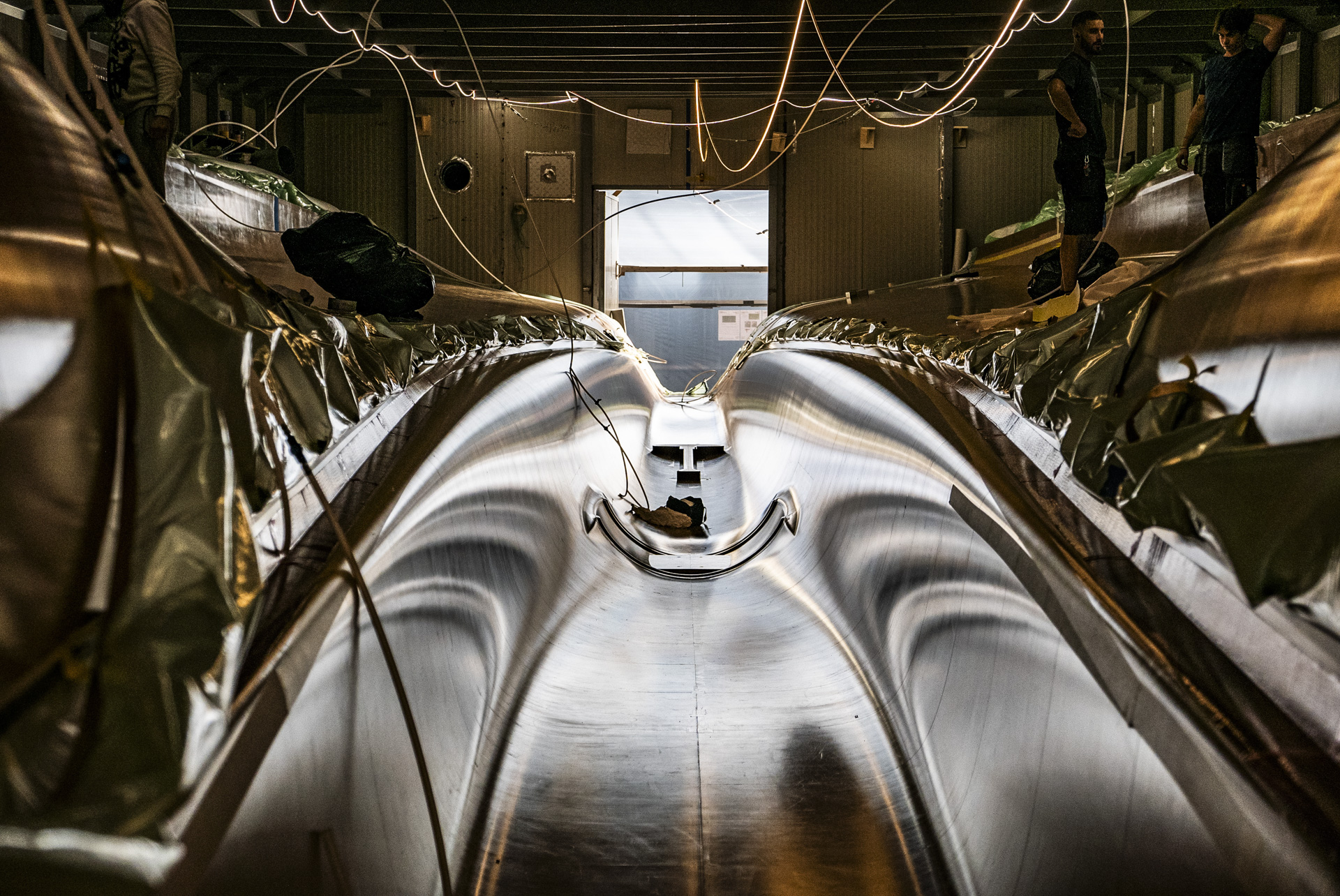
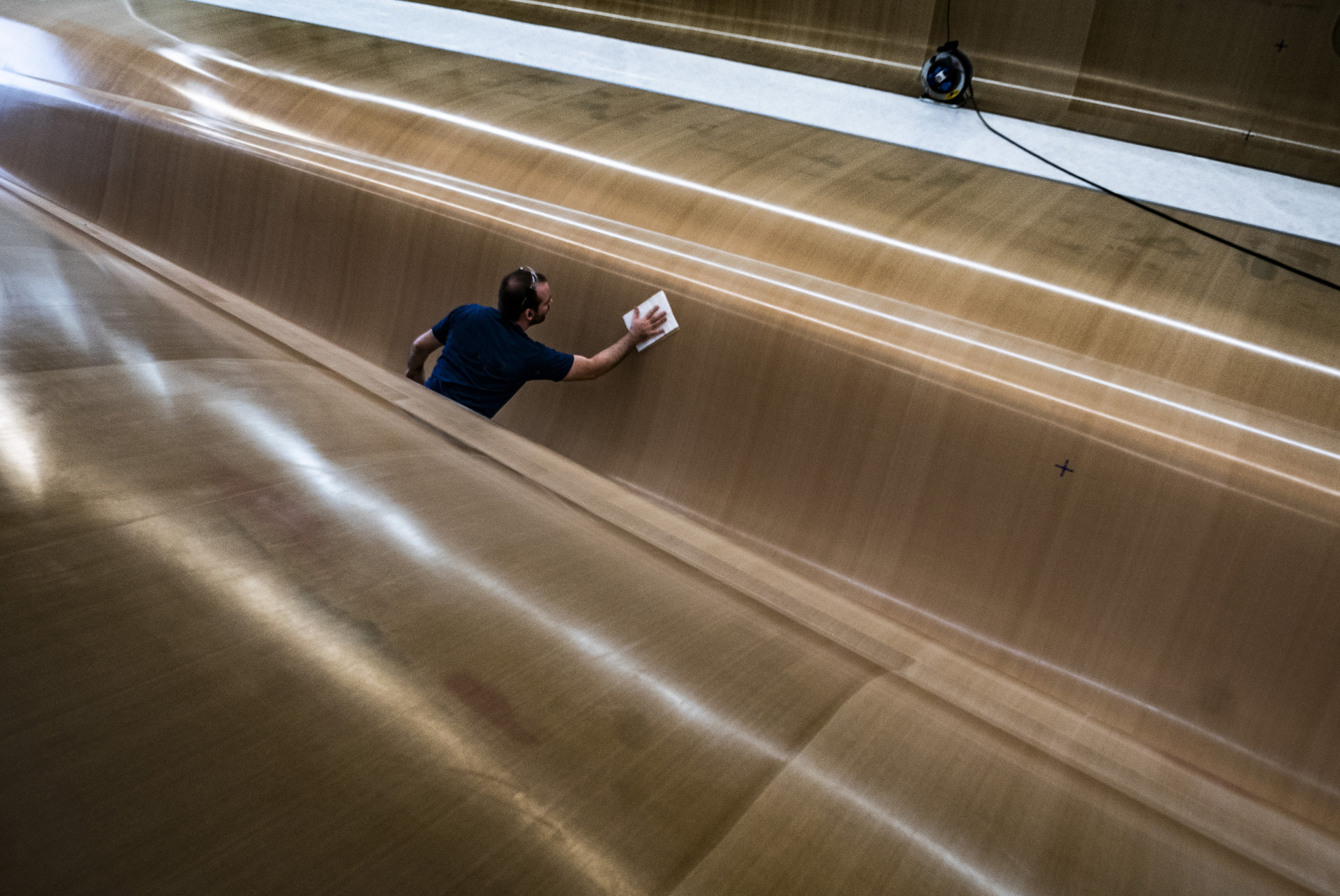
Ferrari’s building the thing in Italy and bringing in other nautical engineers and experts to see the project through, but maintains that it’s an “in-house” vehicle, not just a rebadged white-label boat from an already established nautical brand.
As for its technological details, the Hypersail will be what’s called a full foiling yacht. That means it will effectively “fly” over the water—the hull itself will be up in the air while three little wings (the foils) will be in the water when it’s underway. This is done to minimize drag—pushing through water takes a lot more oomph than pushing through air. The foil on the keel (a long protrusion at the bottom of a sailboat that helps steady it) is apparently uncommon; Ferrari says the Hypersail will be “the world’s first 100-foot monohull with a foil on the keel, designed to fly on three points of contact.”
“…the use of a canting keel as the support for one of the foils, with the other two contact points being a foil on the rudder and, alternately, the two lateral foils,” Ferrari’s release explains.
For those of us who look at boats casually, 100 feet is quite a long vessel. I co-own a stinky old sailboat with some family members, and at about 25 feet, it’s got room for a bedroom, bathroom, and kitchen inside. Looks like Ferrari’s dispensing with the comfort-craft amenities, as, again, this vessel is built around racing.
Ferrari also proudly proclaimed that the Hypersail boat, scheduled to be unveiled in its final form next year, will be entirely powered by wind and the sun (solar power). It has no combustion engine at all.
Development cost and whether or not there will be a commercially available civilian version remain TBA. But if you wanted to go out and buy an America’s Cup racing yacht right now, you’d need $8 to $10 million. And if you actually want to go racing, Outside Magazine once wrote “It has been estimated that mounting a successful America’s Cup campaign costs over $100 million.” I think I’ll stick to local hillclimbs and track days.
Got a tip? Drop us a line at [email protected]

